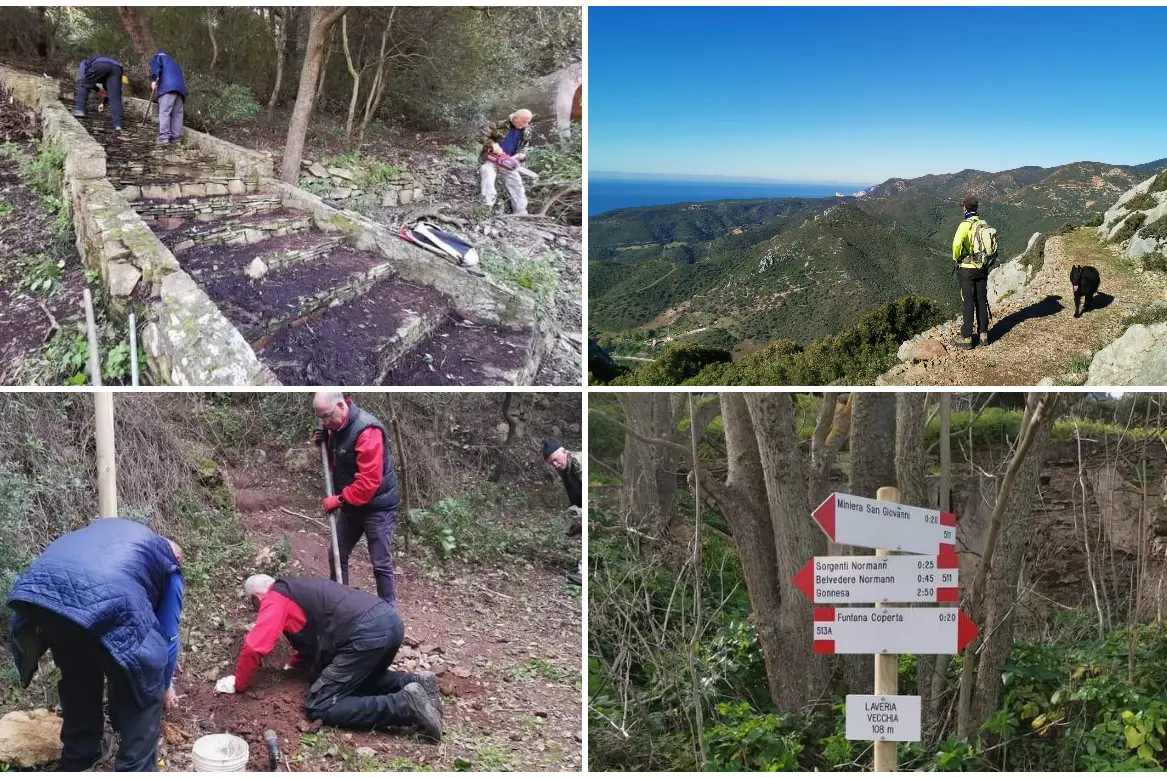Volunteers rediscover the mining trails
They wind through the municipal areas of Gonnesa and Iglesias, the Normann association has managed to make them usablePer restare aggiornato entra nel nostro canale Whatsapp
Once upon a time they were traveled every day by miners and sorters, men and women heading to the mine or to the laundries for a day's work. With the end of the mining era, vegetation and oblivion had erased the paths: now the volunteers of the Normann Village association have rediscovered them and, with the authorization of Forestas, the go-ahead from the Municipalities of Gonnesa and Iglesias and the supervision of the Italian Alpine Club, are about to launch them in the Res, the Sardinian hiking network.
The job
Fifty kilometers of mining trails have been cleared, arranged and reopened by volunteers: eight trails and seven variants that revolve around the Normann village and head towards Monteponi, Monte Agruxiau, Bindua, Gonnesa, Villaggio Asproni, Seddas Modditzis, Monte Scorra, Nebida, all to be covered on foot to rediscover places of memory full of history and mining archeology, geology, speleology, biology. "To trace these paths, we went back to nineteenth-century maps of the area, we didn't invent anything new - says Pierluigi Carta, president of the Normann Village association, at the forefront of the rediscovery of the paths - we had to clean them of vegetation and arrange them to make them passable again. To do this we asked the authorization of Forestas, which manages the cadastre of the paths, we have pre-registered them and they will be included in the Sardinian hiking network. There is a technical table between Forestas and Cai, the paths are traced according to the standards of the Italian Alpine Club and we are also following the same criteria when installing signage». The group of volunteers, including residents of Normann but also a cartographer, photographers and artists, have worked hard to reopen the old trails. These days they are arranging the signs that identify each of them and indicate the direction to follow. There are one hundred and five signs, purchased by the association thanks to the "Guardians of the Future" project financed by the Sardinia Foundation, the Geomining Park and the Municipality of Gonnesa to enhance the mining village, a Gonnesina hamlet. "There is a cultural heritage that we do not know how to read - says Carta - the rediscovery of these paths, making them usable again for excursions, is an awareness of the great heritage that we have and that we can promote from a naturalistic point of view, as well how historic."
Eight ways
The mining paths restored by the volunteers are eight: from Monteponi to Nebida with an intermediate stop at Monte Scorra, from Monte Agruxiau to Funtana Crobetta with a stop at Bindua, from Monte Scorra to Funtana Crobetta with an intermediate stop at Pozzo Baccarini, from San Giovanni Miniera to Gonnesa with an intermediate stop at Laveria Vecchia, from Villaggio Normann to Gonnesa with an intermediate stop at Seddas Modditzis, from Funtana Crobetta to Gonnesa with an intermediate stop at the FMS cantoniera 49, from the Laveria Vecchia carriageway to the Is Guardianus pass with an intermediate stop at the Normann stables and from Funtana Crobetta to the Normann village with an intermediate stop at the springs and the trough. «I used to walk some of these paths as a boy, then they were used less and less until they were completely overgrown by vegetation, as was the road that connected Normann to Gonnesa and which we, from the village, used to reach Gonnesa - says Giampiero Puddu, 72 years old, one of the volunteers - now we're bringing them back to light, it's a bit like bringing a part of our history back to life». Among the interventions, also the cleaning of Funtana Crobetta: freed from weeds, brambles and various brushwood it has finally regained its original appearance, also thanks to the intervention of a vehicle made available by the Municipality of Gonnesa. «Normann's volunteers are an added value of our community - says the mayor Pietro Cocco - their activity and commitment to the promotion of mining villages is commendable and as an administration we support them in every aspect. We believe in the project of the paths within the Sardinian hiking network, it goes perfectly with sustainable tourism that moves an increasing number of people».
Antonella Pani
